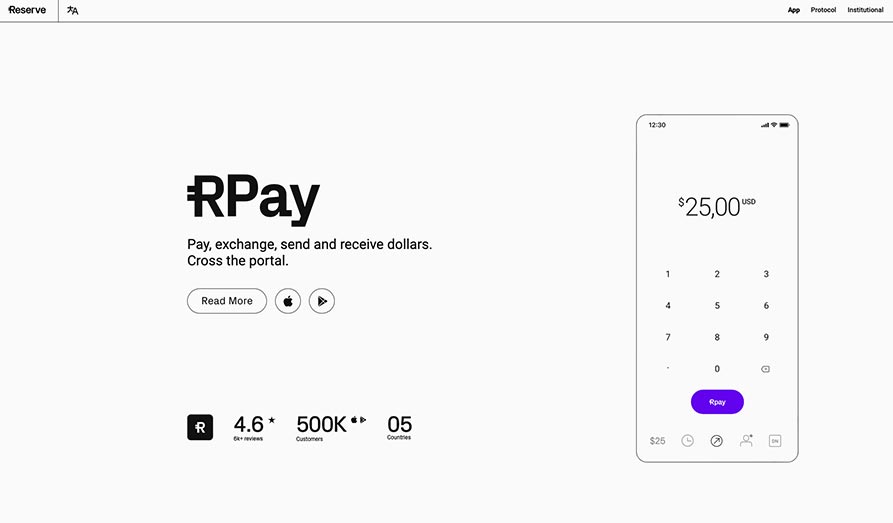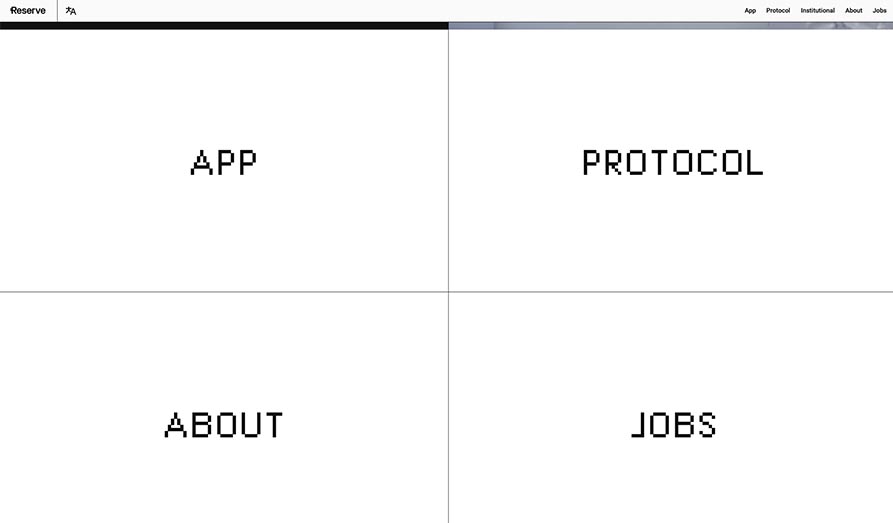


RSR token lives on the Ethereum blockchain and works on the Reserve Protocol. The purpose of this token is to maintain the value of the RSV token, and it does this with the help of other altcoins on the network. The token aims to solve the problem of volatility in cryptocurrencies. In this way, the token makes cryptocurrencies usable for regular transactions. The Reserve Protocol uses a basket of many other cryptocurrencies, and this ensures that the RSV token is free from government regulation. Still, there are risks in the future that governments might regulate this type of cryptocurrencies - so be careful with any investments.
A Bit About Reserve Rights
This cryptocurrency was created by Nevin Freeman and Matt Elder, and both of these are highly experienced entrepreneurs and engineering. Since its launch in 2019, the team has expanded to more than 200 people, and its online community is even much larger.
Reserve Rights is the governance token of the Reserve protocol, without any functionality at the moment.CryptoLists.com
This RSR cryptocurrency has a fixed supply of 100 billion tokens, and its current circulating supply is over 42 billion tokens. Although the supply of Reserve Rights has already been pre-mined, many of the tokens have been taken out of circulation for different reasons. The team behind this project has stated that the supply of Reserve Right tokens may change in the future. Since it is an ERC-20 token, the token is secured against attacks by a robust proof of work consensus.
Utility of Reserve Rights?
The primary purpose of Reserve Rights is to provide a mechanism to maintain the value, since it is the stablecoin of the network. Since the RSV token is pegged to the US dollar, it has to maintain a value of $1 at all times. If the price of RSV falls below $1, the protocol buys more RSV tokens with the RSR token, and this brings the value of the stablecoin back to $1 on crypto exchanges. Whenever the price of RSV goes over the $1 mark, the protocol sells the newly minted or excess stablecoins for the RSR or other tokenized assets. This helps to bring the price back down to $1.
Reserve Rights is also used for governance. Your voting strength will depend on the number of RSR tokens you own. You can propose new changes to the protocol and can vote on suggestions made by other members of the community. Another purpose of the token is staking to secure the protocol. In return for providing insurance by staking, the holders of the tokens will receive a portion of the profits the stablecoins they insured generate.
Reserve Rights Price details
ERC20 Contract address: 0x320623b8e4ff03373931769a31fc52a4e78b5d70
›› Details & Tokenomics
›› RSR tokenomics and social media
Advantages of Reserve Rights
 + RSR has real-world uses.
+ RSR has real-world uses.+ Reserve Right is backed by an experienced and reputable team.
+ It is backed by a large online community.
+ Holders of the token can stake it and earn interest.
+ RSR has a comprehensive whitepaper.
Disadvantages
- The transfer fees of RSR token can be high for Ethereum, but not on the Solana blockchain.
- It has a rather low market cap and is a risky investment.
- You won’t get RSR on many crypto exchanges.
- The stablecoin mechanism of the network hasn’t been properly tested.
Costs
▪ Rated at 9/10This token lives on the Ethereum blockchain, so the gas fees have to be paid out in ETH. The gas fees vary depending on the state of the Ethereum network, and they average at around $20. The cost goes up to over $190 when the network is extremely busy. However, you can also use RSR on Solana and XDai.
Reputation and Buzz
▪ Reputation rated at 8/10▪ Buzz rated at 8/10
The online community of RSR token has been growing steadily since the launch of the altcoin, and the general crypto community now looks forward to the success of the protocol. The main goal of the company is to help people cope with hyperinflation, and it may eventually help to eliminate the problem of hyperinflation entirely. The Twitter page of the company now has more than 103,000 followers.
Some of the developers involved in Reserve Rights
▪ Rated at 9/10The logos below represent some of the developers who have been involved in Reserve Rights. Check out the developer about page, by clicking the logo. There you can see what coins they have developed and at what exchanges, brokers and trading platforms their coins are available.
FAQ
Who created Reserve Rights token?
This altcoin was developed by Nevin Freeman and Matt Elder. Nevin is the CEO of the company, and Matt Elder is the CTO. Nevin is also the co-founder of Paradigm Academy, Riabiz, and MetaMed Research Inc.
How is the Reserve Right token secured?
Since this is an ERC-20 token, it is secured through the proof of work mechanism of Ethereum. This blockchain is backed by a large network of miners. It is worth noting that Ethereum will soon change to become a proof of stake system.
Which crypto wallet should I use to store my RSR tokens?
You can store RSR tokens in any crypto wallet that supports ERC-20 tokens. Cold wallets like Ledger and Trezor offer the highest levels of security as they are offline. If you have a smaller amount of RSR tokens, you can go for software wallets as they are more affordable.
How can I mine this cryptocurrency?
You cannot mine Reserve Rights tokens as the total supply was pre-mined. However, it is possible to stake your tokens and earn interest.
How can I buy RSR tokens?
You can purchase this altcoin on various crypto exchanges, including Huobi Global, Binance, and OKEx. It is also available on various decentralized exchanges. You can trade this altcoin against major cryptocurrencies like Bitcoin and Tether.
Screenshots from Reserve Rights
More sites where to buy/sell/trade Reserve Rights
Below you can see some other platforms, exchanges and/or brokers where you can buy, sell or trade this token. Click on the logo to read our review.Remember to never risk money that you can not afford to loose. Crypto currencies is highly volatile, unregulated in most EU countries, no EU protections & not supervised by the EU regulatory framework. Investments are subject to market risk, including the loss of principal.
Reserve Rights details and tokenomics

SOL Contract address: DkbE8U4gSRuGHcVMA1LwyZPYUjYbfEbjW8DMR3iSXBzr
dai Contract address: 0x5a87eac5642bfed4e354ee8738dacd298e07d1af














































